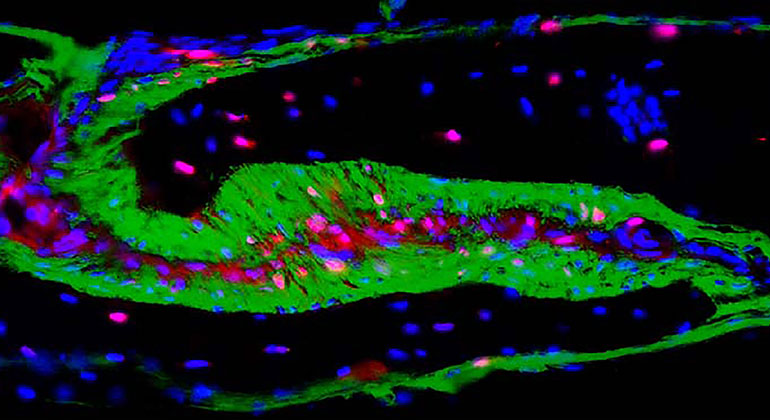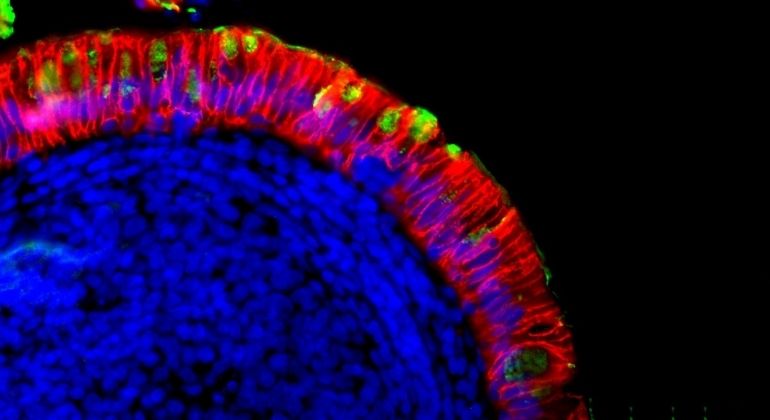Study of Nearly 2,000 Marine Recruits Reveals Asymptomatic SARS-CoV-2 Transmission Among Young Adults During Supervised Quarantine
Results suggest the need for widespread surveillance testing to reduce COVID-19 transmission in group settings

A study of nearly 2,000 Marine recruits who went through supervised quarantine before starting basic training revealed several instances of asymptomatic transmission of SARS-CoV-2, the virus that causes COVID-19, despite the quarantine measures.
The findings have important implications for the effectiveness of public health measures to suppress transmission of COVID-19 among young adults, whether in military training, schools, or other aspects of the pandemic.
The researchers from the Icahn School of Medicine at Mount Sinai and the Naval Medical Research Center studied new Marine recruits while they were in a two-week supervised quarantine. The study results, published November 11 in The New England Journal of Medicine, showed that few infected recruits had symptoms before diagnosis of SARS-CoV-2 infection, that transmission occurred despite implementing many best-practice public health measures, and that diagnoses were made only by scheduled tests, not by tests performed in response to symptoms.
“We were honored that the U.S. Navy gave us the opportunity to collaborate on studying SARS-CoV-2 in Marine recruits,” says Stuart Sealfon, MD, the Sara B. and Seth M. Glickenhaus Professor of Neurology at the Icahn School of Medicine at Mount Sinai. “This is a difficult infection to suppress in young people, even with close supervision of their mask wearing, social distancing, and other mitigation measures. We find that regular testing not dependent on symptoms identifies carriers who can transmit SARS-CoV-2. We hope this information helps in developing more effective measures to keep military installations and schools safe.”
The study data revealed asymptomatic spread of the virus even under strict military orders for quarantine and public health measures that most likely experienced better compliance than what would be possible in other youth settings like college campuses. The researchers noted that daily temperature and symptom checks did not detect infections among the recruits and that the virus was largely transmitted within a given platoon group where trainees tended to be near one another.
The study focused on 1,848 study participants who were enrolled from nine different Marine recruit classes, each containing 350 to 450 recruits, between May 15 and the end of July. The participants were offered enrollment in a prospective, longitudinal study after self-quarantining at home for two weeks prior to arrival at basic training. Once they arrived, they were required to follow strict group quarantine measures with two-person rooms for two weeks—the duration of the study period—before the start of the actual training. The supervised group quarantine took place at a college used only for this purpose. Each recruit class was housed in different buildings and had different dining times and training schedules, so the classes did not interact.
Each weekly class was further divided into platoons of 50-60. During the study period, all recruits wore cloth masks, practiced social distancing of at least six feet, and regularly washed their hands, and each recruit had just one roommate. Most of their instruction, including exercising and learning military customs and traditions, was done outdoors. After each class finished quarantine, a deep cleaning, using bleach on surfaces, occurred in all rooms and common areas of the dormitories before the arrival of the next class.
To determine asymptomatic and symptomatic SARS-CoV-2 prevalence and transmission during supervised quarantine, participants were tested within 2 days of arrival, at 7 days, and at 14 days using a nasal swab (PCR) test authorized for emergency use by the U.S. Food and Drug Administration. Analysis of viral genomes from infected recruits identified multiple clusters that were temporally, spatially, and epidemiologically linked, revealing multiple local transmission events during quarantine.
“The identification of six independent transmission clusters defined by distinct mutations indicates that there were multiple independent SARS-CoV-2 introductions and outbreaks during the supervised quarantine,” said Harm van Bakel, PhD, Assistant Professor of Genetics and Genomic Sciences at the Icahn School of Medicine at Mount Sinai. “The data from this large study indicates that in order to curtail coronavirus transmission in group settings and prevent spill-over to the wider community, we need to establish widespread initial and repeated surveillance testing of all individuals regardless of symptoms.”
Insight into COVID-19 characteristics and SARS-CoV-2 transmission in military personnel has relevance to developing safer approaches for related settings composed primarily of young adults such as schools, sports, and camps.
"Our study highlights the power of Navy Medicine research to deploy and overcome many logistical hurdles during a pandemic and quickly stand up an institutional review board-approved study. These results will improve the medical readiness of our Marines and should help inform public health policy across the Navy, Department of Defense, and society at large to decrease transmission of SARS CoV-2," said Cmdr. Andrew Letizia, MD, Deputy Director of the Naval Medical Research Center’s infection disease directorate and lead researcher for the study.
This work was supported by the Defense Health Agency through the Naval Medical Research Center and the Defense Advanced Research Projects Agency.
About the Mount Sinai Health System
Mount Sinai Health System is one of the largest academic medical systems in the New York metro area, with 48,000 employees working across seven hospitals, more than 400 outpatient practices, more than 600 research and clinical labs, a school of nursing, and a leading school of medicine and graduate education. Mount Sinai advances health for all people, everywhere, by taking on the most complex health care challenges of our time—discovering and applying new scientific learning and knowledge; developing safer, more effective treatments; educating the next generation of medical leaders and innovators; and supporting local communities by delivering high-quality care to all who need it.
Through the integration of its hospitals, labs, and schools, Mount Sinai offers comprehensive health care solutions from birth through geriatrics, leveraging innovative approaches such as artificial intelligence and informatics while keeping patients’ medical and emotional needs at the center of all treatment. The Health System includes approximately 9,000 primary and specialty care physicians and 10 free-standing joint-venture centers throughout the five boroughs of New York City, Westchester, Long Island, and Florida. Hospitals within the System are consistently ranked by Newsweek’s® “The World’s Best Smart Hospitals, Best in State Hospitals, World Best Hospitals and Best Specialty Hospitals” and by U.S. News & World Report's® “Best Hospitals” and “Best Children’s Hospitals.” The Mount Sinai Hospital is on the U.S. News & World Report® “Best Hospitals” Honor Roll for 2025-2026.
For more information, visit https://www.mountsinai.org or find Mount Sinai on Facebook, Instagram, LinkedIn, X, and YouTube.

Study Explores Sex Differences in the Effects of SARS-CoV-2 in Young Adults
Nov 09, 2022 View All Press Releases
Scientists Show How Bone-Bordering Cells May Help Shape a Skull
Dec 09, 2021 View All Press Releases

